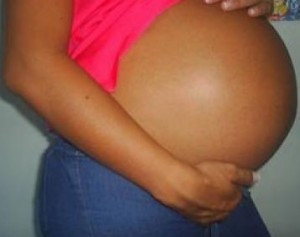The worrying trend of fibroid in Ghana
 The records are frightening, but it is true that three to five cases of fibroid are operated daily at Korle Bu Teaching Hospital alone.
The records are frightening, but it is true that three to five cases of fibroid are operated daily at Korle Bu Teaching Hospital alone.
It is also a fact that out of every three women in the country, one has fibroid, but despite these chilling records, there is less information about the prevention and treatment of the health condition.
According to Dr Theodore Boafor, Consultant Obstetrician and Gynaecologist, fibroid cases are on the increase and women above 30 years are more likely to have the disease.
However, he added: “Most fibroid cases do not cause any health problem,” he told the GNA in an interview in Accra.
Dr Boafor explained that the same hormones that control menses promote the growth of fibroid so if a female has been having her period throughout her life the chances of having fibroid are higher.
“When you are pregnant you do not menstruate so there is a break in the menstrual cycle. It has been observed that people who have several pregnancies in their lifetime are least likely to have fibroid.
“However, those who have had no break in their menstrual cycle are most likely to have fibroid,” he said.
Dr Boafor said fibroid is a benign growth of the womb, which is not dangerous but the malignant growth (cancer) could pose health challenges.
He noted one could live with fibroid and seek treatment if it causes pain around the abdomen during and after menses or experience visible enlargement of the lower abdomen and excessive bleeding with lot of blood clots, dizziness and weakness as a result of the blood loss.
He said if the fibroid is causing problems then the patient needs surgery: myomectomy or hysterectomy.
Myomectomy involves the removal of fibroid growth while hysterectomy involves the removal of the womb.
“People usually discover they have fibroid accidentally when they go for a scan for another health situation because there is no clear symptom to show one has fibroid.
“When this happens one should not worry because medical doctors are able to manage those that cause problems.”
The most visible sign of fibroid is the enlargement of the lower abdomen. However there are other reasons why a lady may start developing a big stomach.
While there may be some health reasons there is also lifestyle. Inevitable situations may also cause a lady to have a visibly big stomach.
One of such conditions is pregnancy, however some women may not have their stomach as flat after given birth.
Dr Boafor explained that the increase in the belly size after childbirth is due to the stretch in the abdominal walls that occurs during pregnancy.
He said the womb begins to expand especially in the second half of the pregnancy, as it expands to cater for the growing foetus, and the growing amount of amniotic fluid around the baby.
“The stretch sometimes becomes so much that there is a lot of stretch marks called striae,” he said.
“After the baby is delivered, the womb may try to return to its original size but it usually doesn’t because of the stretch that has taken place.
“However there is individual variation.
There are people who have a lot more elastic muscle tissue so even when they are stretched, they come back a little normal than others, but for most people the stretch causes the abdominal walls to become lax.”
Dr Boafor said there is the need for a woman to do the abdominal wall exercise.
“If a woman had a normal delivery then three weeks after delivery when she is completely well, then she can start the exercise. After a caesarean session with no complication, it may take a woman 4-6 weeks to be fit to start exercise.”
He added that the results are better if one starts the abdominal wall exercise early after childbirth.
“The woman should lie on her back and the neck resting in both hands. Then lift the legs with knees stretched up to the waist level. This can be repeated a number of times.”
Meanwhile a GNA survey revealed that most women after childbirth have big stomachs and some men have a high regard for those who are able to maintain flat belly even after childbirth.
Some traders at the Tema station market explained that after childbirth, they used cloth to tie their stomachs for some time, but the reduction was not significant.
Most ladies working in the Ministries explained that they wore corset beneath their clothing, and very few exercised after childbirth.
There were also the ladies who did nothing at all after childbirth, but had their bellies return to normal.
From the survey, it was also discovered that some women were overly worried about their tummies after pregnancy whereas their husbands didn’t mind.
However, some men were very critical of young ladies who have not delivered but have visibly big stomachs.
They explained that it is a complete turn off for them.
In order for one to get over a medical hurdle, one needs to first have a calm mind.
Fibroid may cause ladies tummy to be big, post-pregnancy conditions may also cause their abdomen to enlarge, or even cholesterol.
Through vigorous exercises one could reverse her big tummy and through good diets the health problems associated with high cholesterol could also be under control.
The challenges of fibroid could also not be out of control if ladies take the advice their doctors give them seriously.
So after all “there is light at the end of the tunnel.”
By Caroline Pomeyie
Source: GNA
